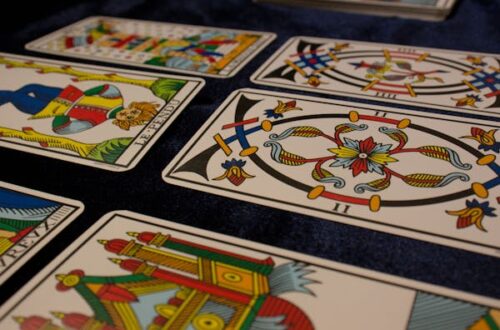
An Egyptian ritual for love using pictures
Table of Contents
Egyptian Spells Using Pictures
Discover the fascinating world of ancient Egyptian magic through the art of picture-based spells. Unearth the significance of hieroglyphs, symbolic depictions, and sacred rituals that shaped their mystical practices.
The origins of Egyptian picture-based spells
Ancient Egyptian civilization is renowned for its deep connection to spirituality and the metaphysical realm. Central to this was their belief in the transformative power of images. The Egyptians considered pictures not just artistic representations but potent conduits of magical energy. Their spiritual practices often intertwined with art, creating spells imbued with the symbolic strength of pictorial elements. This unique fusion laid the foundation for picture-based spells.
The use of picture-based spells can be traced back to the Old Kingdom, around 2686–2181 BCE. During this time, hieroglyphs evolved not only as a writing system but also as sacred symbols believed to harness divine energy. Early examples of such spells are found on pyramid walls, where drawings of protective deities and symbols were inscribed to safeguard the pharaoh’s journey to the afterlife.

Why pictures were deemed magical
Pictures held a dual role in Egyptian culture. First, they acted as visual storytelling tools, depicting mythological tales and sacred teachings. Second, they were seen as living entities, capable of influencing the physical and spiritual realms. This belief stemmed from their polytheistic religion, where gods and cosmic forces were frequently represented in symbolic imagery. These depictions served as focal points for prayers and incantations, amplifying the potency of spells.
Understanding the hieroglyphs: The magic of symbols
Hieroglyphs, a cornerstone of Egyptian writing, were more than mere letters; they were carriers of mystical intent. Each hieroglyphic symbol had a specific meaning, often linked to natural elements, divine beings, or cosmic principles. The Egyptians meticulously crafted these symbols, imbuing them with magical properties through their design and context within spells.
Key symbols in magical practices
Several hieroglyphic symbols were consistently used in spells due to their powerful associations. For instance:
- The Ankh: Representing life and immortality, it was a common element in spells seeking vitality and protection.
- The Udjat Eye: Also known as the Eye of Horus, it symbolized health, protection, and restoration. Spells featuring this symbol often aimed to heal or shield individuals from harm.
- The Scarab: Associated with rebirth and transformation, it was frequently included in rituals for renewal or afterlife guidance.
By combining these symbols with specific words or actions, Egyptian practitioners created intricate spells that addressed various needs. The placement and orientation of these symbols within a pictorial spell were also critical, as they influenced the spell’s effectiveness.

Types of picture-based spells
The Egyptians employed picture-based spells for diverse purposes, ranging from protection and healing to prosperity and communication with deities. The categorization of these spells often depended on their intended function and the elements incorporated into their design.
Protective spells
One of the most common uses of picture-based spells was protection. Images of deities like Bastet, Sekhmet, or Anubis were often inscribed on amulets, walls, or papyri. These symbols acted as guardians against evil spirits or misfortune. Protective spells frequently included depictions of shields or defensive postures, emphasizing their intent.
Case study: The Book of the Dead
The Book of the Dead is a prime example of picture-based spells in action. This collection of funerary texts contains intricate drawings and symbols designed to guide the deceased through the challenges of the afterlife. Each vignette in the text serves a magical purpose, whether protecting the soul from demons or assisting in navigating the Duat (the underworld).
Healing spells
Healing spells often utilized images of the Eye of Horus, as it represented restoration and balance. Practitioners would draw this symbol on objects or directly on the skin of the afflicted person, accompanied by incantations to invoke its curative powers. These spells often blended religious devotion with practical medical knowledge, highlighting the holistic approach of Egyptian magic.

Techniques for crafting picture-based spells
Creating effective picture-based spells required a thorough understanding of symbolism, divine associations, and ritual precision. Ancient texts and archaeological findings reveal that Egyptian magicians adhered to specific techniques to maximize the potency of their spells.
The role of color
Colors held significant meaning in Egyptian magic, influencing the energy of the spell. For example:
- Gold: Representing divinity and eternal life, it was used in spells for immortality.
- Green: Symbolizing fertility and growth, it featured prominently in agricultural or healing rituals.
- Red: Associated with power and danger, it often appeared in protective spells to ward off malevolent forces.
By carefully selecting colors for their depictions, practitioners ensured their spells resonated with the desired energy.
Integration of sacred geometry
Sacred geometry was another critical component in picture-based spells. Patterns like concentric circles or pyramidal shapes amplified the spell’s focus and intention. These designs often mirrored cosmic structures, reinforcing the connection between earthly magic and universal harmony.

The modern interpretation of egyptian picture-based spells
Today, the study of Egyptian spells offers insights into their advanced understanding of symbolism and spiritual practices. Modern practitioners often adapt these ancient techniques, using them in contemporary rituals or art forms. Despite cultural differences, the core principles of intention, symbolism, and ritual precision remain relevant.
Preserving the legacy
Scholars and enthusiasts continue to explore ancient Egyptian texts and artifacts, decoding the intricate meanings behind their pictorial spells. Museums and academic institutions worldwide play a crucial role in preserving and disseminating this knowledge. The ongoing translation of hieroglyphic texts ensures that these mystical traditions remain accessible to future generations.




